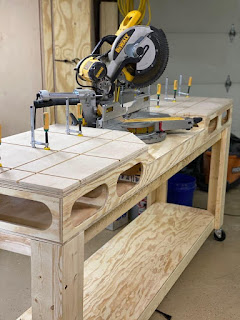Maximize Your Mini-Space: DIY Woodworking Furniture for Small Rooms
Cramped quarters don't mean cramped style! With a little creativity and some basic woodworking skills, you can craft stunning, space-saving furniture perfectly tailored to your small apartment or room. Forget bulky, mass-produced pieces; embrace the satisfaction of building bespoke furniture that not only fits your space but also reflects your personal aesthetic. This guide will walk you through the process, empowering you to transform your small space into a haven of functionality and charm.
Planning Your Compact Creations
Before you even pick up a saw, meticulous planning is crucial. Measure your space precisely. Don't just eyeball it! Note every nook and cranny, considering not only the dimensions of the furniture itself, but also the necessary clearance for doors, drawers, and comfortable movement. Sketch out your design ideas, experimenting with different configurations to maximize storage and functionality. Consider multi-functional pieces: a coffee table with hidden storage, a bed with integrated drawers, or a wall-mounted desk that folds away when not in use. Think vertically! Utilize wall space with shelves and floating units to keep items off the floor and create a sense of spaciousness.
Choosing the Right Wood
The type of wood you select significantly impacts the final look and feel of your furniture. Lightweight woods like pine or poplar are excellent choices for beginners, offering ease of workability and affordability. For a more robust piece, consider hardwoods like oak or maple, but be prepared for a steeper learning curve. Always source your wood from reputable suppliers to ensure quality and consistency. Remember to account for the wood's natural movement and plan for expansion and contraction, especially in humid climates.
Essential Tools and Materials
Gathering the right tools is key to a successful project. You'll need the basics: a measuring tape, pencil, saw (hand saw or circular saw), sandpaper (various grits), wood glue, clamps, and screws. Depending on your design, you might also require a drill, router, planer, and finishing tools. Don't forget safety gear: eye protection, ear protection, and dust mask are absolute necessities. For materials, besides your chosen wood, you'll need appropriate hardware like hinges, handles, and drawer slides. Always source quality materials; skimping here can lead to frustrating setbacks.
Step-by-Step Construction: A Simple Example
Let's build a simple floating shelf. First, cut your wood to the desired length and width. Sand all surfaces smoothly. Next, carefully locate and pre-drill holes for your mounting brackets. Secure the brackets to the wall using appropriate wall anchors, then attach the shelf to the brackets. Finally, sand and finish the shelf with a stain, paint, or sealant of your choice. This straightforward project demonstrates the fundamental principles: precise measurement, careful cutting, and secure assembly. Remember to always follow safety guidelines throughout the process.
Finishing Touches and Space-Saving Strategies
Once your furniture is assembled, the finishing touches are what truly elevate the piece. Choose a finish that complements your décor and protects the wood. Consider using a clear sealant to enhance the natural beauty of the wood, or opt for a paint to add a pop of color. Don't underestimate the power of clever storage solutions. Utilize vertical space with wall-mounted shelves, install drawers under beds, or incorporate hidden compartments into your designs. By combining practical functionality with aesthetic appeal, you'll create stunning DIY furniture that makes a statement in even the smallest of spaces.
Embrace the Imperfect
Remember, your first few projects might not be perfect. Embrace the imperfections! Woodworking is a learning process. Don't be discouraged by mistakes; learn from them and keep practicing. The satisfaction of building something with your own hands far outweighs any minor imperfections. With each project, you'll gain confidence and skill, creating beautiful and functional pieces that truly reflect your personality and enhance your living space. The beauty of DIY is that it's uniquely yours!


0 comments:
Post a Comment